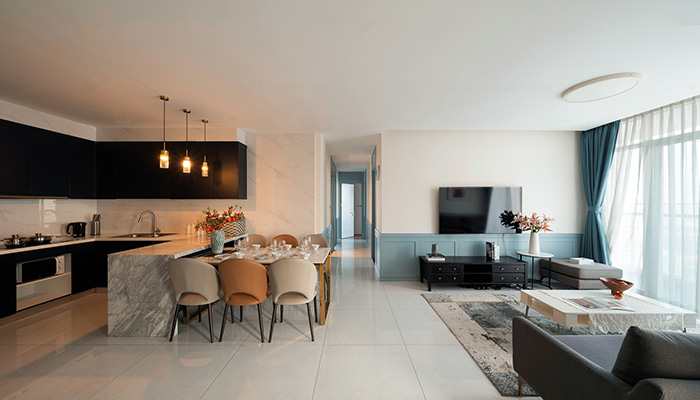Top tourist attractions near Tiến Lộc Palace Hotel in Phu Ly, Ha Nam
1. Natural Attractions
1.1. Luon Cave
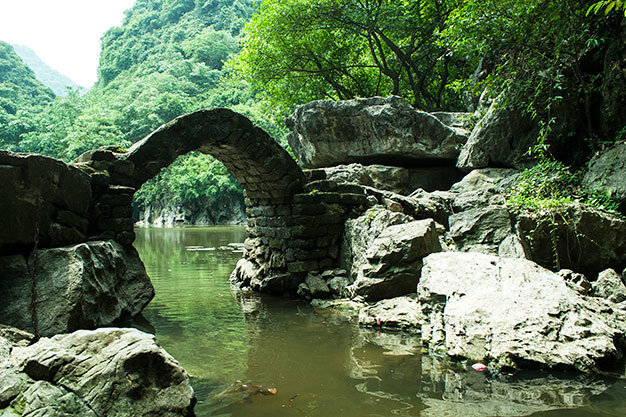
Ao Dong - Luon Cave are two inseparable tourist spots in Ha Nam. Sitting on a boat, you can admire the natural beauty of the mountain range, forming an arched gate that is Luon Cave. Inside the cave, you'll find numerous stalactites of various shapes, creating a surreal and enchanting atmosphere, even without artificial lighting. The cave has a length of about 400 meters and, although not very large, its entrance is wide with foliage-covered arches. During the rainy season, boats cannot enter the cave due to high water levels. As you approach the cave, you'll feel the cool breeze and hear the wind blowing through its two entrances. The boatwoman provides flashlights and skillfully navigates, introducing the various stalactites hanging from the cave's ceiling.
1.2. Bat Canh Son
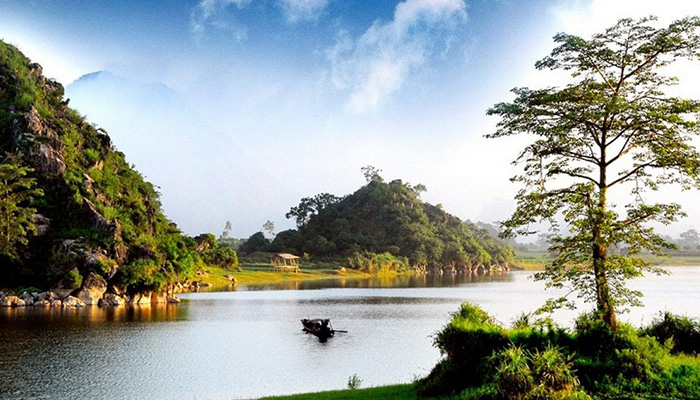
Bat Canh Son is a famous historical site located in Tượng Lĩnh commune, Kim Bảng district, Ha Nam. The name Bat Canh Son comes from the eight-winged mountain range, which was once frequented by kings and officials to enjoy the beautiful scenery. In the past, Bat Canh Son was home to eight temples and a shrine dedicated to local deities, arranged based on the principles of the Five Elements and Eight Trigrams. Although many temples are no longer present, Bat Canh Son still attracts a large number of tourists each year.
1.3. Phuc Long Cave

Phuc Long Cave is situated in the Chua Mountain area in the center of the Kien Khe mountain range. Chua Mountain is formed by large overlapping rock blocks, creating a dragon-shaped head with sharp rocks resembling dragon horns and the mountain's temple as the focal point. Inside the cave, there are numerous sparkling and enchanting stalactites. From the mountain top, visitors can admire the picturesque landscapes of But Son Mountain, Ho Citadel, Thanh Thuy Forest, and Day River.
2. Spiritual Destinations
2.1. Tam Chuc Complex - The Largest Pagoda in the World
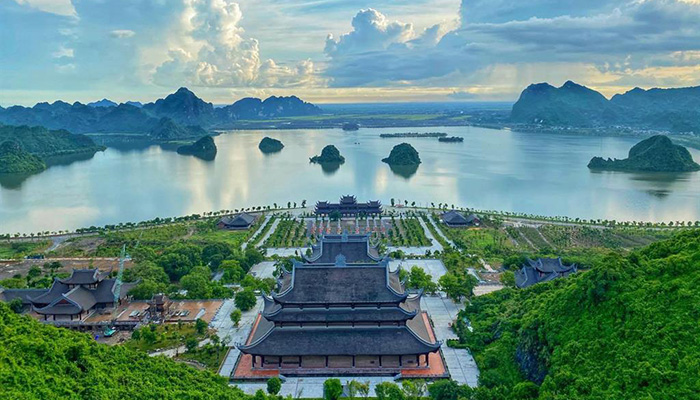
Tam Chuc Pagoda in Ha Nam province covers an area of 5100 hectares, making it the largest pagoda in the world. In 2019, Tam Chuc Pagoda had the honor of hosting the United Nations Day of Vesak Celebration, with thousands of Buddhist followers from all over the world participating. The pagoda holds an annual festival on the 12th day of the first lunar month. Aside from its spiritual significance, Tam Chuc Pagoda is also popular among young people for its magnificent natural landscapes with green mountains and blue waters.
2.2. Ba Danh Pagoda
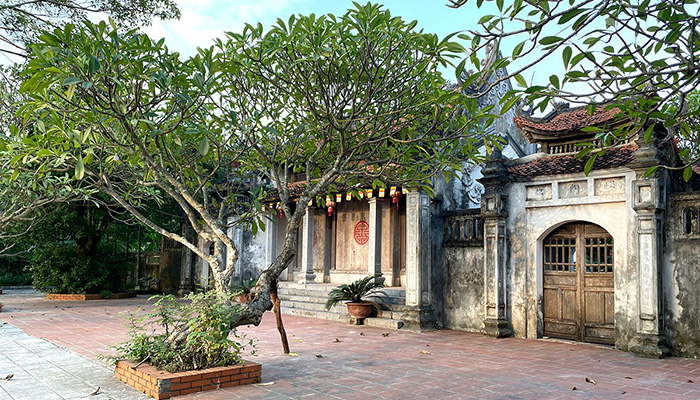
Ba Danh Pagoda, covering approximately 10 hectares, is the oldest pagoda in Ha Nam, located in Kim Bang commune. Facing the Day River, the pagoda is surrounded by charming landscapes of hills and rivers. The pagoda complex includes various architectural works with nearly 40 large and small buildings. Despite the saying "as desolate as Ba Danh Pagoda," the reality is that it is always bustling with visitors, especially during festivals.
2.3. Den Tran Thuong: Special National Historical Site
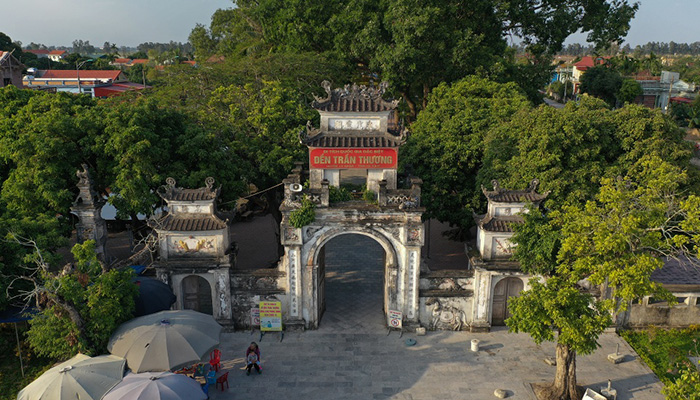
Den Tran Thuong is located in Tran Thuong hamlet, Nhan Dao commune, Ly Nhan district, Ha Nam. It is a temple dedicated to Tran Hung Dao, who built it on the land where he stored food supplies during the Second Mongol Invasion in 1285. The temple's architecture features ancient and solemn designs, arranged in the "Four Waterways and Five Elements" pattern. The landscape and architecture create a harmonious fusion of culture and spirituality. Den Tran Thuong is a significant historical tourist destination in Ha Nam.
2.4. Chua Bau
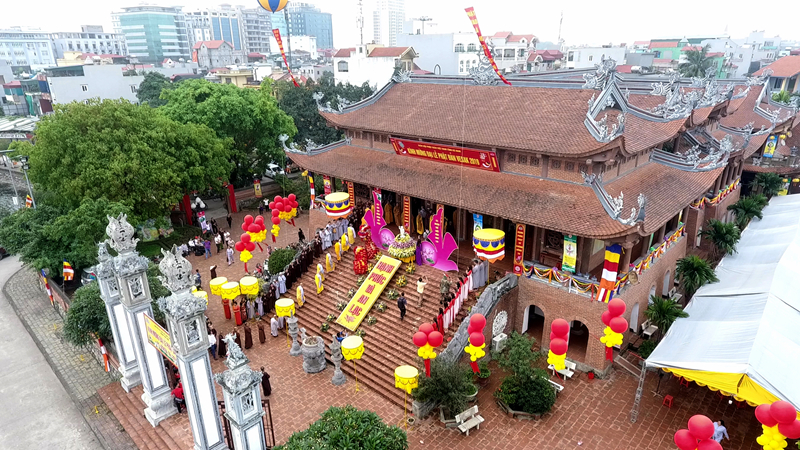
According to historical records, Chua Bau has a history of over a thousand years and is located in the present-day Bau village and Bau market area. The name "Bau" is derived from "Bieu" in Chinese, meaning a land that emerges from the water's surface. In the past, the area around Chua Bau was covered with water, and in the middle of it emerged a hill where an ancient pagoda was built. Chua Bau used to have a large lake of the same name, and in the middle of the lake stood an impressive tower. The lake had an underground stream connected to the Day River, providing a year-round supply of water. According to the Five Elements theory, the pagoda symbolizes yang, and the lake symbolizes yin, representing a harmonious balance. Chua Bau is a sacred place and a reminder for people to cleanse their minds and enter the pagoda with a pure heart during Buddhist ceremonies.
3. Craft Villages
3.1. Nha Xa Silk Village

When talking about high-quality silk with a soft and smooth texture, Nha Xa silk cannot be overlooked. The fabric produced here is durable and, under the skillful hands of experienced weavers, creates a unique and comfortable sensation when worn, especially during hot summers. Visiting Nha Xa, you will not only enjoy the beauty of a countryside village in the Northern Delta region but also have the opportunity to choose the finest silk products, handwoven and dyed using traditional methods by skilled artisans. Nha Xa is also known for being the first place to use natural materials such as brown roots, ant wings, fern leaves, and cajuput leaves to dye silk. These factors make Nha Xa silk highly sought after and trusted for its quality and safety.
3.2. Vu Dai Fish Sauce Village
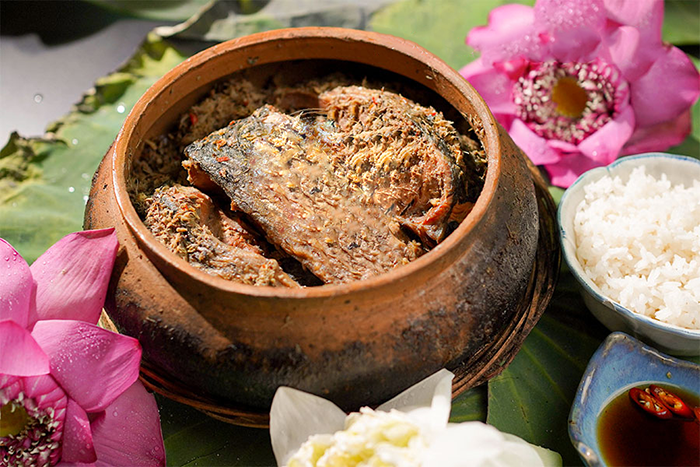
When it comes to Ha Nam's specialties, Vu Dai fish sauce is a delicacy that tourists should not miss. Also known as Dai Hoang fish sauce, Nhan Hau fish sauce, or Ha Nam fish sauce, it is made from black carp fish and pork belly seasoned with various local spices. The fish sauce preparation and aging process is time-consuming and requires great effort, but the end product is a delicious pot of fish sauce with firm fish meat and completely brown fish bones, resembling grasshopper wings. The distinctive flavor of Vu Dai fish sauce attracts both local and international food enthusiasts.
These are the top tourist destinations near Tiến Lộc Palace Hotel. Hopefully, with this information, tourists will have an exciting journey.
1.1. Luon Cave

Ao Dong - Luon Cave are two inseparable tourist spots in Ha Nam. Sitting on a boat, you can admire the natural beauty of the mountain range, forming an arched gate that is Luon Cave. Inside the cave, you'll find numerous stalactites of various shapes, creating a surreal and enchanting atmosphere, even without artificial lighting. The cave has a length of about 400 meters and, although not very large, its entrance is wide with foliage-covered arches. During the rainy season, boats cannot enter the cave due to high water levels. As you approach the cave, you'll feel the cool breeze and hear the wind blowing through its two entrances. The boatwoman provides flashlights and skillfully navigates, introducing the various stalactites hanging from the cave's ceiling.
1.2. Bat Canh Son

Bat Canh Son is a famous historical site located in Tượng Lĩnh commune, Kim Bảng district, Ha Nam. The name Bat Canh Son comes from the eight-winged mountain range, which was once frequented by kings and officials to enjoy the beautiful scenery. In the past, Bat Canh Son was home to eight temples and a shrine dedicated to local deities, arranged based on the principles of the Five Elements and Eight Trigrams. Although many temples are no longer present, Bat Canh Son still attracts a large number of tourists each year.
1.3. Phuc Long Cave

Phuc Long Cave is situated in the Chua Mountain area in the center of the Kien Khe mountain range. Chua Mountain is formed by large overlapping rock blocks, creating a dragon-shaped head with sharp rocks resembling dragon horns and the mountain's temple as the focal point. Inside the cave, there are numerous sparkling and enchanting stalactites. From the mountain top, visitors can admire the picturesque landscapes of But Son Mountain, Ho Citadel, Thanh Thuy Forest, and Day River.
2. Spiritual Destinations
2.1. Tam Chuc Complex - The Largest Pagoda in the World

Tam Chuc Pagoda in Ha Nam province covers an area of 5100 hectares, making it the largest pagoda in the world. In 2019, Tam Chuc Pagoda had the honor of hosting the United Nations Day of Vesak Celebration, with thousands of Buddhist followers from all over the world participating. The pagoda holds an annual festival on the 12th day of the first lunar month. Aside from its spiritual significance, Tam Chuc Pagoda is also popular among young people for its magnificent natural landscapes with green mountains and blue waters.
2.2. Ba Danh Pagoda

Ba Danh Pagoda, covering approximately 10 hectares, is the oldest pagoda in Ha Nam, located in Kim Bang commune. Facing the Day River, the pagoda is surrounded by charming landscapes of hills and rivers. The pagoda complex includes various architectural works with nearly 40 large and small buildings. Despite the saying "as desolate as Ba Danh Pagoda," the reality is that it is always bustling with visitors, especially during festivals.
2.3. Den Tran Thuong: Special National Historical Site

Den Tran Thuong is located in Tran Thuong hamlet, Nhan Dao commune, Ly Nhan district, Ha Nam. It is a temple dedicated to Tran Hung Dao, who built it on the land where he stored food supplies during the Second Mongol Invasion in 1285. The temple's architecture features ancient and solemn designs, arranged in the "Four Waterways and Five Elements" pattern. The landscape and architecture create a harmonious fusion of culture and spirituality. Den Tran Thuong is a significant historical tourist destination in Ha Nam.
2.4. Chua Bau

According to historical records, Chua Bau has a history of over a thousand years and is located in the present-day Bau village and Bau market area. The name "Bau" is derived from "Bieu" in Chinese, meaning a land that emerges from the water's surface. In the past, the area around Chua Bau was covered with water, and in the middle of it emerged a hill where an ancient pagoda was built. Chua Bau used to have a large lake of the same name, and in the middle of the lake stood an impressive tower. The lake had an underground stream connected to the Day River, providing a year-round supply of water. According to the Five Elements theory, the pagoda symbolizes yang, and the lake symbolizes yin, representing a harmonious balance. Chua Bau is a sacred place and a reminder for people to cleanse their minds and enter the pagoda with a pure heart during Buddhist ceremonies.
3. Craft Villages
3.1. Nha Xa Silk Village

When talking about high-quality silk with a soft and smooth texture, Nha Xa silk cannot be overlooked. The fabric produced here is durable and, under the skillful hands of experienced weavers, creates a unique and comfortable sensation when worn, especially during hot summers. Visiting Nha Xa, you will not only enjoy the beauty of a countryside village in the Northern Delta region but also have the opportunity to choose the finest silk products, handwoven and dyed using traditional methods by skilled artisans. Nha Xa is also known for being the first place to use natural materials such as brown roots, ant wings, fern leaves, and cajuput leaves to dye silk. These factors make Nha Xa silk highly sought after and trusted for its quality and safety.
3.2. Vu Dai Fish Sauce Village

When it comes to Ha Nam's specialties, Vu Dai fish sauce is a delicacy that tourists should not miss. Also known as Dai Hoang fish sauce, Nhan Hau fish sauce, or Ha Nam fish sauce, it is made from black carp fish and pork belly seasoned with various local spices. The fish sauce preparation and aging process is time-consuming and requires great effort, but the end product is a delicious pot of fish sauce with firm fish meat and completely brown fish bones, resembling grasshopper wings. The distinctive flavor of Vu Dai fish sauce attracts both local and international food enthusiasts.
These are the top tourist destinations near Tiến Lộc Palace Hotel. Hopefully, with this information, tourists will have an exciting journey.

.jpg)
